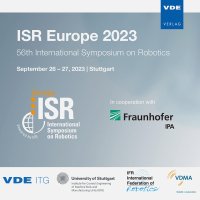Towards a Robotic-Based Development Environment for Designing and Evaluating Exoskeletons
Conference: ISR Europe 2023 - 56th International Symposium on Robotics
09/26/2023 - 09/27/2023 at Stuttgart, Germany
Proceedings: ISR Europe 2023
Pages: 7Language: englishTyp: PDF
Authors:
Hoffmann, Niclas; Mir Latifi, Seyed Milad; Nagwekar, Rajal (Laboratory of Manufacturing Technology (LaFT), Helmut Schmidt University Hamburg (HSU), Germany)
Weidner, Robert (Laboratory of Manufacturing Technology (LaFT), Helmut Schmidt University Hamburg (HSU), Germany & Chair for Production Technology (PfF), Institute of Mechatronics, University of Innsbruck (UIBK), Austria)
Abstract:
Human-centered support systems become increasingly important in future workplaces due to, e.g., demographic and societal changes, skills shortage, and global competitiveness. In this context, industrial exoskeletons can be a promising approach especially for physically demanding tasks with manual handlings. Targeted to the addressed application scenario, such systems principally feature different morphologies and technical functionalities, which both individually determine the perceived user experience as well as the assessed usability, acceptance, and applicability of the respective system. Reflecting relevant influencing factors on tailored system design, classically applied development processes for industrial exoskeletons, and recent research activities, this paper describes the vision of a robotic-based development environment that merges different fields of research within the DTEC-research project “EVO-MTI”. Prospectively, the intended development environment should facilitate, accelerate, broaden, and standardize the development of industrial exoskeletons in terms of system design, evaluation, and validation. It should basically consist of a) (robotic-based) simulations of humans, tasks, and exoskeletons on hardware-level, b) comprehensive simulation models for describing their relevant features and properties on software-level, and c) a central merging knowledge-database for stowing data, controlling systems (exoskeleton, cobots and humanoid), and deriving reasonable design decisions. For first illustrations, the application example is set to shoulder support by exoskeletons, but the approach can also be transferred to other applications with direct human-machine interaction (e.g., tools or protheses).


